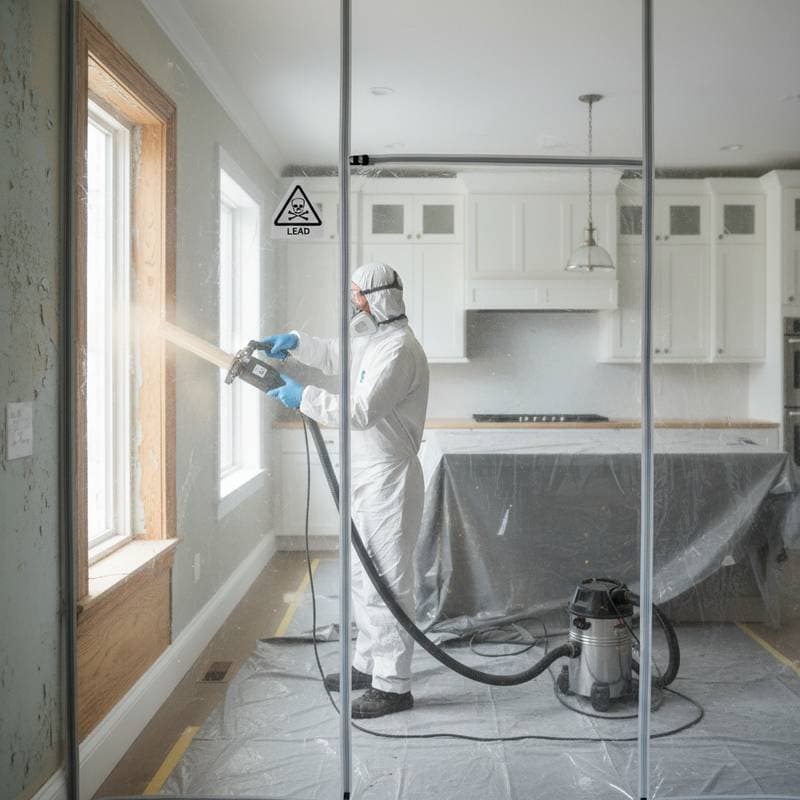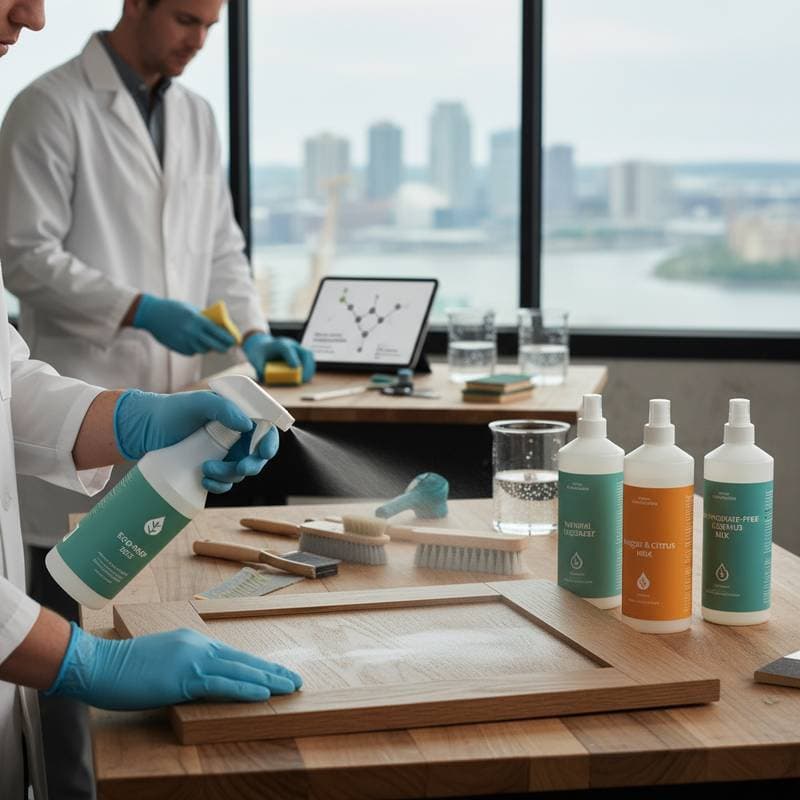The TSP Ban: $500 More for Smarter Surface Preparation
Homeowners preparing for a painting project must now account for restrictions on trisodium phosphate, commonly called TSP. This powerful cleaner once excelled at removing grease and residues prior to painting. Current environmental and safety rules limit its application, leading professionals and individuals to adopt safer, yet pricier, options. These regulations improve air quality and protect water sources, though they introduce added expenses and steps in readying surfaces.
Knowledge of these shifts empowers homeowners to budget accurately, sidestep unforeseen expenses, and uphold high-quality finishes.
Project Cost Breakdown
Average Cost Ranges
- Basic surface preparation: $300 to $600
- Standard preparation using TSP alternatives: $700 to $1,000
- Premium eco-safe preparation for extensive or intricate surfaces: $1,100 to $1,500
Included Services
- Thorough cleaning of walls, trim, and other surfaces
- Elimination of old residues, grease, and mildew
- Gentle sanding and smoothing to promote uniform paint adhesion
- Final rinsing and drying ahead of primer application
Additional Charges
- Intensive mildew eradication and application of mold-resistant coatings
- Lead-compliant cleaning protocols for pre-1978 homes
- Targeted treatments for high-moisture areas like kitchens or bathrooms
- Increased labor for uneven or multi-layered surfaces
Key Cost Influences
| Factor | Cost Impact | Examples |
|---|---|---|
| Surface type | Moderate | Glossy cabinets or detailed moldings demand extended effort |
| Contaminants | High | Accumulated grease, nicotine stains, or persistent mildew extend cleaning duration |
| Product choice | Moderate | Biodegradable cleaners exceed TSP prices by 20 to 50 percent |
| Labor demands | High | Hand-scrubbing textured walls can double preparation hours |
Reasons Behind the TSP Phase-Out
TSP earned its reputation among painters for unmatched degreasing capabilities. However, its phosphate content poses risks to aquatic environments. Runoff from drains fuels excessive algae blooms, which deplete oxygen and threaten fish populations. Authorities in numerous regions now enforce bans or strict limits, compelling the industry to embrace compliant alternatives. Such measures safeguard waterways, yet they elevate material and workforce expenses.
Contemporary Alternatives and Their Effects
Professionals rely on phosphate-free degreasers and eco-friendly surfactants for replacement. Formulations with sodium carbonate, citric acid, or botanical extracts provide robust cleaning without polluting runoff. These options demand extended application periods and greater physical input to rival TSP's efficiency. Consequently, preparation expenses for a typical residence climb by $400 to $600.
Homeowners gain from reduced volatile emissions, simplified waste handling, and enhanced sustainability. Preparation phases extend, but the process yields superior environmental outcomes and reliable paint bonds.
Realistic Timeline Projections
Standard preparation for residential interiors spans one to two days. Adoption of TSP substitutes may prolong this by four to eight hours, influenced by surface state and project scale. Allow ample intervals for drying, as residual dampness under paint layers invites adhesion failures like blistering or delamination.
Weighing DIY Against Professional Services
Homeowners might cut expenses by tackling cleaning with retail TSP alternatives. Yet, errors in mixing ratios, inadequate rinsing, or overlooked contaminants compromise paint durability. Experts apply precise solutions, don protective equipment, and adhere to disposal protocols for regulatory compliance.
Limit DIY efforts to modest spaces or cosmetic updates where slight flaws prove tolerable. For comprehensive repaints, professional intervention minimizes rework costs and extends surface longevity by years.
Selecting Reliable Professionals
Seek contractors certified in eco-safe practices and familiar with local ordinances. Review their experience with phosphate-free methods and request demonstrations of product efficacy. Verify insurance coverage and references from similar projects to ensure accountability.
Discuss timelines, material sourcing, and waste management upfront. A reputable team provides transparent breakdowns, helping you align expectations with budget realities.
Essential Planning Steps
Assess your home's surfaces early: inspect for grease buildup, moisture damage, or prior coatings. Compile a checklist of rooms involved and note any special challenges, such as high-traffic kitchens.
Solicit quotes from three providers, emphasizing preparation details. Factor in seasonal timing to avoid rush fees, and allocate a 10 to 15 percent buffer for variables like unexpected contaminants.
Schedule a pre-project walkthrough to confirm scope. This collaboration refines estimates and sets the foundation for seamless execution.
Frequently Asked Questions
Why have surface preparation costs increased following the TSP restrictions?
Higher expenses stem from elevated prices of non-phosphate cleaners and prolonged labor needs. These products necessitate repeated applications on stubborn soils, amplifying overall project outlays.
How much time does surface preparation require for a typical residence?
Projects generally span one to two days. Alternatives to TSP add several hours, particularly for thorough decontamination or extended drying periods.
Is TSP permissible for minor homeowner tasks in certain areas?
Limited applications persist in select locales, subject to regional rules. Consult labels for usage guidelines and proper disposal to maintain compliance.
What questions should direct to contractors regarding preparation techniques?
Inquire about specific cleaners employed, runoff containment strategies, and alignment with ecological standards. Demand itemized estimates covering labor, supplies, and any contingencies.
Do TSP substitutes match the performance of conventional agents?
When applied properly, they deliver comparable results, albeit with increased agitation and soak durations. Experts integrate them with tools like scrub brushes for optimal outcomes.
How might one minimize preparation expenditures?
Maintain surfaces routinely through dusting and spot-cleaning to curb residue accumulation. Promptly treat emerging issues like spills or humidity to streamline future efforts.
Secure Enduring Finishes Through Informed Preparation
Embracing these changes transforms painting from a routine chore into an opportunity for sustainable improvement. By selecting vetted alternatives and partnering with skilled teams, homeowners secure vibrant, resilient results. This approach not only controls costs but also contributes to healthier living environments for generations ahead.



